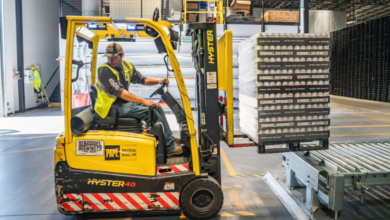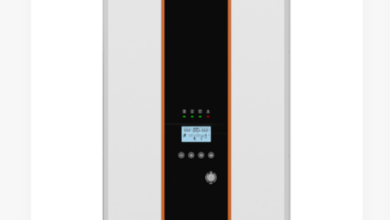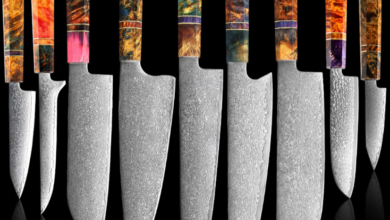Floor Damage: How Improper Cleaning Can Ruin Your Floors

Floors are a significant investment in any home or business, impacting both aesthetics and value. Selecting the right cleaning methods is essential to maintain their beauty and longevity. Improper cleaning techniques can lead to significant and sometimes irreversible floor damage. This article explores how improper cleaning can damage various flooring types and what steps to take to prevent these issues.
Understanding the Risks
Neglecting floor maintenance can lead to several problems that compromise the integrity and appearance of your flooring. These include:
- Water damage
- Scratches and gouges
- Sun damage
- Damage from temperature and humidity fluctuations
- Damage from improper cleaning methods
- Heavy impacts and dropped objects
- Damage from inadequate maintenance
These issues can diminish the overall look of your space and lead to costly repairs or replacements.
See also: Plastic Injection Moulding: What Buyers Need to Know
Water Damage: A Major Threat
Water is a leading cause of damage to many types of flooring, especially hardwood. Prolonged exposure to moisture can cause warping, swelling, and even rotting.
Causes of Water Damage
- Leaks and Spills: Any water exposure, if not addressed immediately, can harm your floors.
- High Humidity: Constant high humidity can cause wood to expand and contract, leading to warping.
- Improper Cleaning: Excessive water use during cleaning can seep into the wood, causing damage.
Prevention Tips
- Wipe up spills immediately to prevent absorption.
- Use a dehumidifier in humid environments to maintain consistent moisture levels.
- Clean with dry or damp methods, using minimal water.
Scratches and Gouges
Scratches and gouges can compromise the finish, exposing the material to further damage.
Common Causes of Scratches and Gouges
- Furniture Movement: Moving heavy furniture without protection can cause deep scratches.
- Pet Claws: Pets with long nails can easily scratch floor surfaces.
- Sharp Objects: High heels and sharp objects can leave permanent marks.
Prevention Tips
- Apply felt pads under furniture legs to prevent scratching.
- Keep pet nails trimmed regularly to minimize scratching.
- Avoid wearing high heels on vulnerable floors.
Sun Damage: Fading and Discoloration
Excessive sunlight can cause fading and discoloration over time, affecting the floor’s appearance.
Causes of Sun Damage
- Direct Sunlight: Prolonged exposure to direct sunlight can fade or darken the floor.
- Inconsistent Protection: Uneven fading can result from inadequate window treatments.
Prevention Tips
- Install UV-protective window films or shades.
- Rotate furniture and rugs to ensure even exposure to sunlight.
Excessive sunlight can cause fading and discoloration over time, affecting the floor’s appearance.
Temperature and Humidity Fluctuations
Extreme temperature and humidity changes can cause floors to expand and contract, leading to damage.
Causes of Temperature and Humidity Damage
- Improper Installation: Floors can expand or contract unexpectedly if not acclimated before installation.
- Seasonal Changes: Seasonal temperature and humidity shifts can cause swelling or shrinking.
Prevention Tips
- Maintain consistent indoor humidity levels, ideally between 35-55%.
- Acclimate floors to the room temperature before installation to prevent issues.
Incorrect Cleaning Methods: A Recipe for Disaster
Using improper cleaning methods can strip finishes and leave floors vulnerable.
Common Mistakes in Cleaning
- Harsh Chemicals: Harsh chemicals can damage a floor’s finish.
- Excessive Water: Too much water leads to moisture damage.
- Abrasive Tools: Abrasive scrubbing can scratch delicate surfaces.
Using improper cleaning methods can strip finishes and leave floors vulnerable.
Prevention Tips for Proper Cleaning
- Use floor cleaners designed for the specific type of flooring in your home.
- Use a damp, not wet, mop to prevent water damage.
- Opt for microfiber cloths instead of abrasive tools.
Impacts and Dropped Objects: Immediate Damage
Heavy impacts can cause immediate dents or cracks, leading to irreversible damage.
Common Causes of Damage from Impacts
- Accidental Drops: Dropping heavy items can cause dents or cracks.
- Children’s Toys: Hard or heavy toys can damage floors, especially in play areas.
Prevention Tips
- Use area rugs in high-risk zones like kitchens and play areas to cushion impacts.
- Exercise caution when handling heavy items to prevent accidental drops.
Inadequate Maintenance: Neglect Takes Its Toll
Lack of regular maintenance results in dirt and grime buildup, scratching and dulling finishes.
Common Maintenance Issues
- Ignoring Dust and Debris: Dirt scratches surfaces if not removed regularly.
- Skipping Re-Sealing: Floors lose protection without periodic re-sealing.
Prevention Tips for Adequate Maintenance
- Sweep or vacuum regularly to remove dirt and debris.
- Schedule professional cleaning and sealing services periodically to maintain finish and protection.
Choosing the Right Cleaning Products
The selection of appropriate cleaning products is paramount in preventing floor damage.
Understanding Cleaner Compatibility
Not all cleaners are suitable for every type of floor. Understanding the chemical properties of different cleaners and their compatibility with various flooring materials is crucial. For instance, acidic cleaners might etch natural stone, while alkaline solutions can damage certain wood finishes.
Reading Labels
Always read product labels carefully. Labels provide essential information about the cleaner’s intended use, ingredients, and potential hazards. Opt for products specifically designed for your floor type.
Gentle Solutions
Whenever possible, use gentle cleaning solutions. Avoid overly acidic or alkaline substances that might erode or discolor the floor surface. Products with a neutral pH are generally safer for most flooring types.
Effective Cleaning Techniques
Employing the right cleaning techniques enhances the effectiveness of any cleaning process while minimizing risks to the floor.
Controlled Mopping
When mopping, ensure you wring out excess water to prevent pooling, which can seep into seams or cracks. Use a damp mop rather than a soaking wet one. For floors vulnerable to water damage, dry mopping is a safer approach.
Targeted Cleaning
For tile floors, pay special attention to grout lines where buildup tends to occur. Utilize brushes with firm bristles to scrub these areas effectively. Regular grout cleaning can prevent discoloration and maintain the floor’s overall appearance.
You can also prevent water and moisture exposure by using robot vacuum cleaner that have self-cleaning capabilities.
Regular Sweeping and Vacuuming
Regular sweeping and vacuuming are critical steps. These practices remove dirt and debris that can scratch surfaces over time. Using soft-bristle brooms and vacuums with appropriate floor settings can prevent damage during cleaning.
Avoiding Common Mistakes
Avoiding common mistakes can substantially extend the life of your floors.
Too Much Water
One prevalent error is using too much water during cleaning, which can result in swelling or buckling in floors. Always use a damp mop and ensure excess water is wrung out thoroughly.
Unattended Spills
Leaving spills unattended for extended periods leads to staining and damage. Promptly address spills to prevent penetration and absorption into the floor material.
Dragging Furniture
Dragging heavy furniture across unprotected floors leads to scuffs and scratches. Employ protective pads under furniture legs or use moving dollies to distribute weight and prevent surface damage.
The Cost-Benefit of Quality Floor Care
Caring for your floors properly offers substantial long-term returns on investment.
Reduced Repair Costs
Though high-quality cleaning products and maintenance services might have higher upfront costs, they typically provide superior protection against damage, reducing the need for frequent repairs and replacements. Preventive maintenance is more cost-effective than addressing significant damage later on.
Enhanced Property Values
Well-maintained floors enhance property resale value. Floors that are in excellent condition contribute to the overall appeal of a home or business, potentially increasing its market value.
Long-Term Financial Efficiency
Allocating resources wisely toward preventive measures ensures better financial outcomes over time. Regular maintenance, proper cleaning techniques, and the use of quality products combine to provide long-term financial efficiency by preserving the integrity and appearance of your floors.



